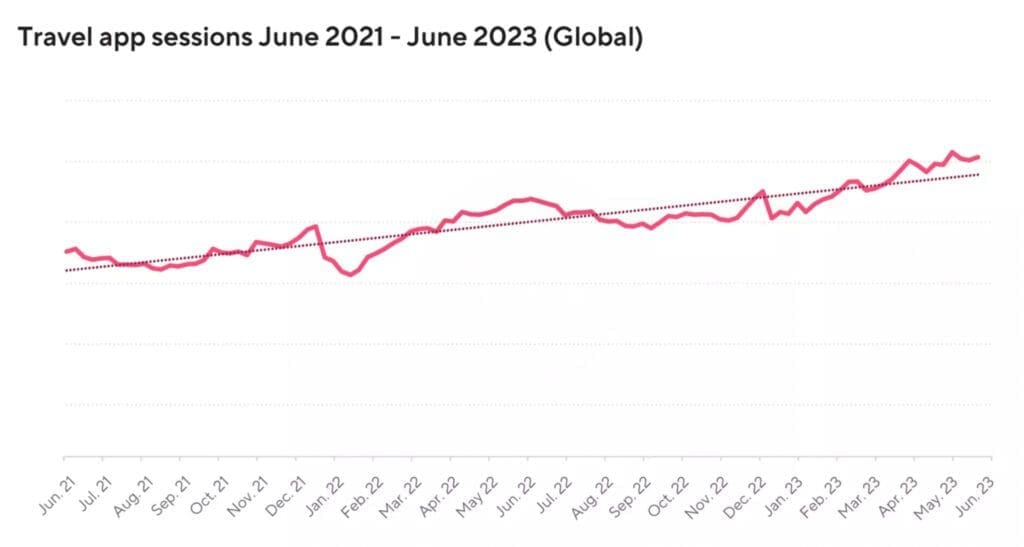Travel Apps Are the New Black?
A new study by Adjust has proven something that most of us, mobile advertising professionals, probably already knew but needed more reliable data to state: travel apps are rapidly gaining popularity, with consistently growing audience and revenue.
Table of Contents
Based on data collected over the first six months of 2023, Adjust reports that the number of travel app installs, app sessions, user retention, and revenues all have grown significantly since Q4 2019 or pre-COVID pandemic times.
Travel apps market revenue
When we say that a surge in travel app popularity wasn’t a surprise for us at Admiral Media and other mobile marketing professionals, it means that the rise of this market segment was predicted by analysts in advance considering the end of COVID-19 pandemic and cancellation of multiple travel restrictions that were largely imposed during 2020.
Travel app market’s global revenue was forecasted to continuously increase between 2023 and 2027 by roughly $730 mln or 59.32%. After the fourth consecutive increasing year, the revenue is estimated to reach $2 bln in 2027.
In 2023, a total global revenue of all travel apps is expected to reach $1.23 bln.
Travel apps installs jump
Going back to the Adjust study, the number of installs of travel apps is now considerably above the pre-pandemic levels. 2022 saw an increase of travel app install by 8% year-over-year and 2023 enjoyed 5% YoY increase, with the 2023 average so far 18% above the Q4 2019 average.
June seems to be the month when travel apps installs reach their peaks:
- June 2021 travel app installs were 7% above the yearly average.
- June 2022 travel app installs were 10% above the yearly average.
- June 2023 travel app installs were 11% above the H1 2023 average.
Travel app sessions increase accordingly
The length of travel app sessions is also now on considerably higher levels compared to pre-COVID-19 times. Travel app sessions increased by 14% in 2022, and in the first half of 2023 they added another 13% above 2022’s yearly average. Adjust’s analysts expect this percentage to grow further by the end of the year, reaching 87% above the Q4 2019 average.





